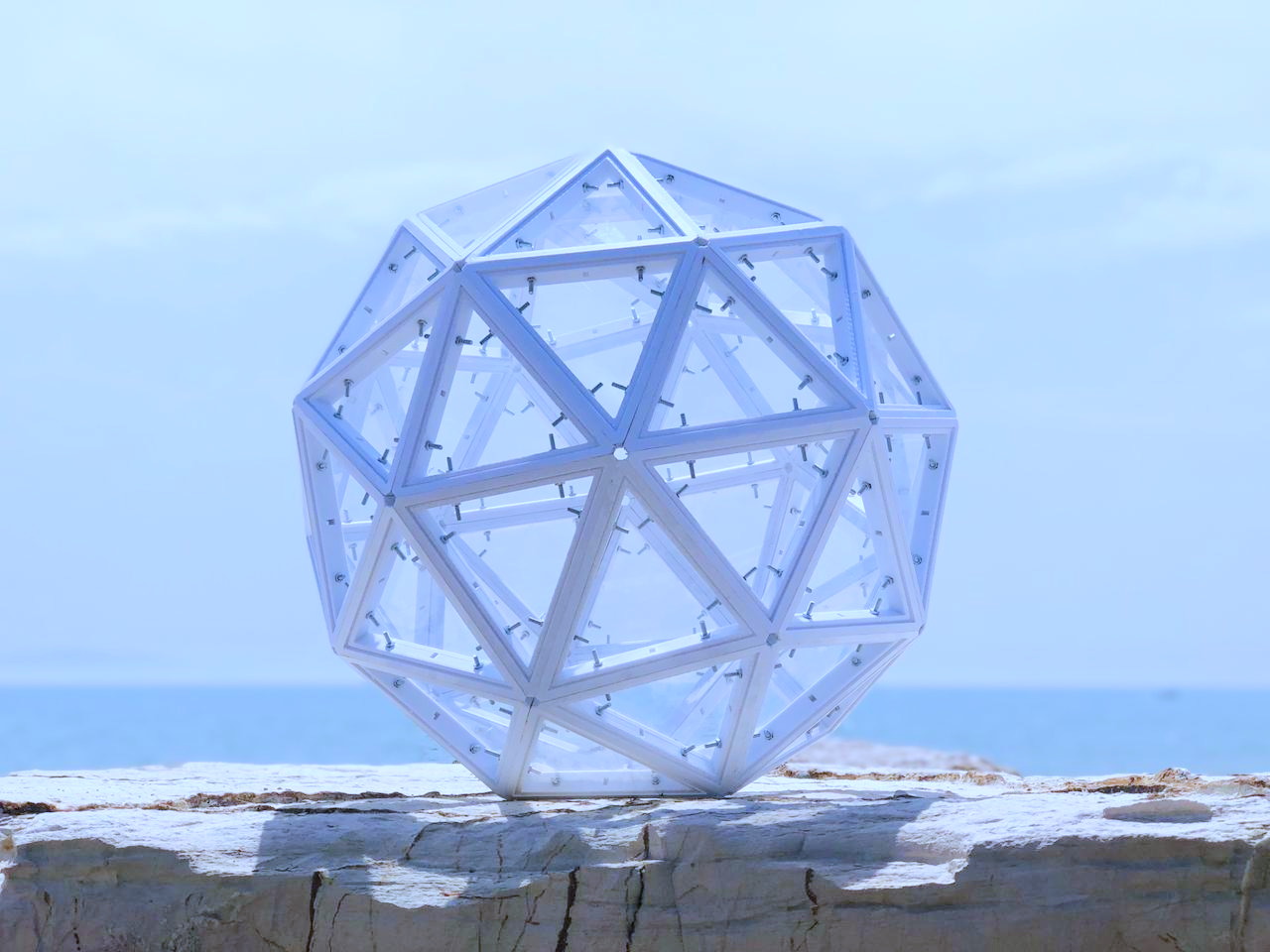Being passionate about product design, the ViZmerald team was looking to prove its know-how on a concrete project. While exhibiting our services in Riyeda 2022, we were approached by Mr. Abdessatar Nefzi, a scuba diving expert and military medical inspector, for an international patent published years ago and that he wanted to concretize in a 3D printed model representing a geodesic Dome with the challenge of making it waterproof. The figure below shows our analysis made for the patent paper.

The patent proposes a “Method for producing triangular elements designed for structures manufacture” and claims that the proposed method can be exploited for waterproof submarine structures that support water pressure. While this proposal has been validated with partial prototypes and molds made in wood and/or paper, the challenge of producing the fully spherical structure has not been done yet, and Mr Abdessatar couldn’t wait to see it concretized in a 3D print. Except that, all his trials to produce a fully closed 3D structure came unsuccessful. The following two figures show the existing realizations having served to validate the patent.


When trying to get the help of CAD engineering experts, either they were busy, or they avoided such a technical challenge! That’s where our startup ViZmerald came to action and was able to bring value: We highly appreciated the chance to work on an international patent, and accepted the challenge. Thus after evaluating the existing patent, the first step was to propose a 3D CAD model under SolidWorks. The challenge was to find the unique triangle shape that allowed the creation of a frequency-1 dome shape, while allowing the waterproof rubber gaskets (see comparative study shown in Fig.3.a) and the different fixtures (see comparative study shown in Fig.3.b) to take place.


Based on our research, we have been first able to propose a Proof Of Concept (POC) 3D CAD model that answered, for the first time, our client’s need for a mathematically-proven triangle that could serve for the construction of a dome of 1 meter size. The following pictures show the first CAD model proposed after two weeks of work. Interestingly, we were able to both: 1) approximate very closely the original patent proposed triangle, and 2) include the waterproof gaskets and fixtures required, see Figs and video below to better understand our proposed model.


After validating the POC model with a smaller size 3D printed version, we were able to ship a clean prototype of the aimed triangle to our client. The acceptance of this version triggered the later printing of a first set of 6 triangles shaping the 1-meter diameter dome. At this level, we started collaborating with Mr. Achraf Rouatbi from RCI3D, our 3D printing service partner, to shorten our 3D printing times and join forces with our own 3D printer. The following figures illustrate the results obtained.


At this point, the updates requested by our client were mainly to reduce the weight of the overall dome and allow the aimed connection screws to be firmly placed on top of flat-shaped embodiments. In order to provide a closed structure, we considered the cutting of 3mm plexiglass pieces that would fit with the right tolerance inside each of the top and the bottom of every triangle. These last challenging tasks requested the consideration of both: the 5 edged pentagons and the 6 edges hexagons composing the dome, and the right consideration for the counter-pression forces existing between the different pieces, in order to get the final shape fully closed. The progress in the realization of final version of the dome is given in the videos here below.
Finally we were able to deliver the full product and to make a shooting on the iconic beach of La Goulette (حلق الوادي) in Tunis. The results were really satisfying 🙂


Conclusions and outcomes
The full project reached its end in around 5 dedicated weeks. Most of all, it reinforced our engineering skills in waterproof and airtight apparels. A skill that comes very useful for the main product of our startup: the AmenAir helmet, as it has to be closely airtight to allow for the right air flow towards the wearer’s face. This project also proved our 3D design skills as we were up to the challenge and allowed our client, for the first time, to have his patent fully concretized in hands.
Perspectives: After having obtained the very attractive dome result, additional tasks came to proposal by Mr Abdessatar, including the creation of a mid-level horizontal plan that is gyroscopically stable inside the dome to serve as content holder, and the extension of the obtained model to serve for different other use-cases that include drones and even spaceships! Who knows, a dream that might come true one day! 🙂
